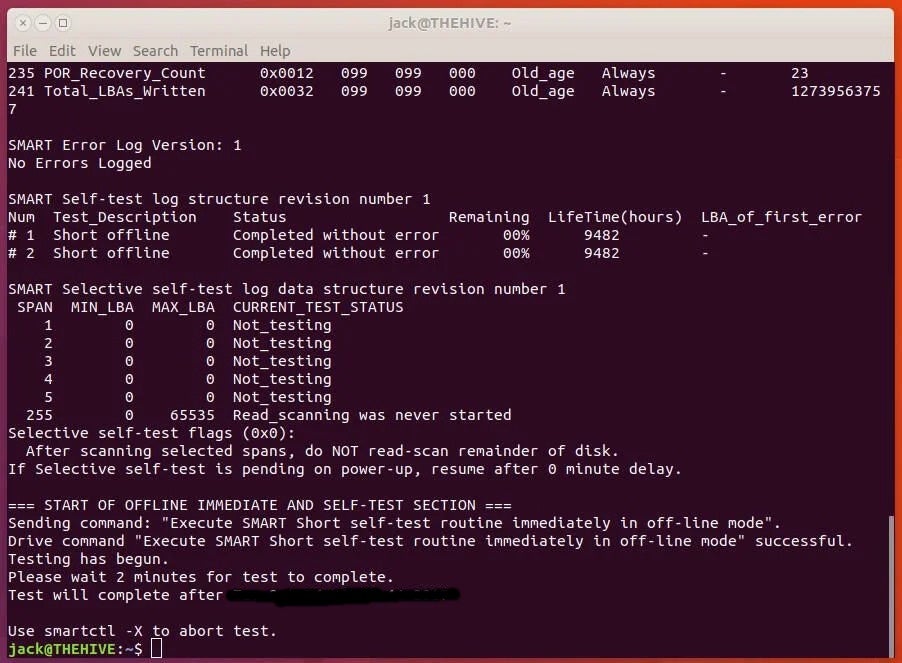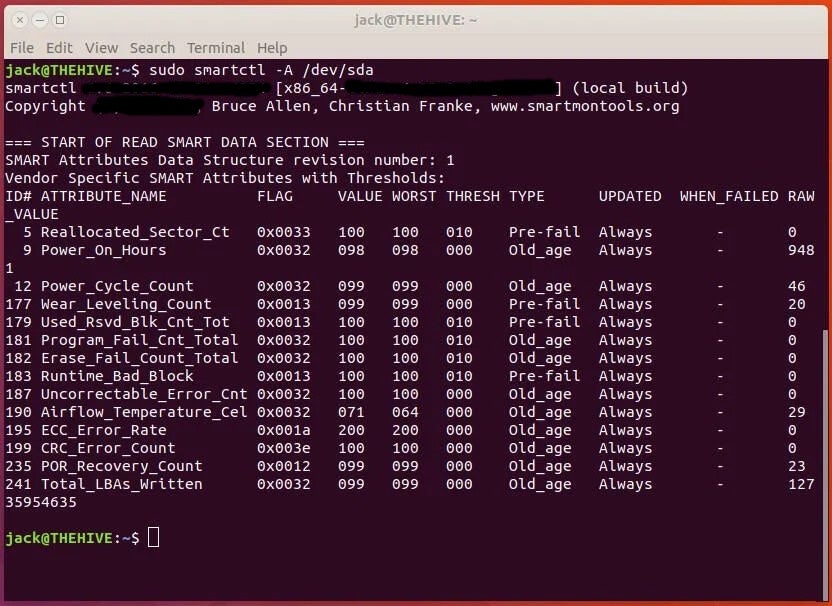In case your information middle makes use of Linux machines, one of many administrative duties you will wish to undertake is to usually test the well being of the SSD drives used on these machines. Why? As a result of whereas solid-state drives will dramatically outlast rotating platter drives, they’ve a restricted lifespan. The very last thing you wish to do is fall sufferer to that exact finish of days.
How do you test the well being of these drives? As with every little thing in Linux, there are alternatives. Though a GUI resolution exists (GNOME Disks), I strongly advocate going with a command line device for this process. Why? More often than not, your Linux servers is not going to embrace a GUI; with the command line, you may simply use it by safely plugging into your distant Linux server and working your assessments from the terminal.
The device in query is smartctl. This command lets you shortly see your SSD well being. In fact, how a lot mileage you get out of the project will rely upon the make/mannequin of SSD you are utilizing. Sadly, the SMART (Self-Monitoring, Evaluation and Reporting Expertise) instruments should not at all times updated with each SSD drive.
Due to this, you can’t be certain of the variety of instances your SSD discs have been written to. Even with this in thoughts, you may get estimate of the damage and tear in your drives.
Let’s set up and use smartctl.
SEE: Methods to View Your SSH Keys in Linux, macOS, and Home windows (TechRepublic)
Set up
I’ll exhibit utilizing the Ubuntu platform. The required package deal is present in all the usual repositories, so regulate the set up command to fit your specific distribution of selection.
The smartctl device is a part of the smartmontools package deal. It may be put in with a single command:
sudo apt set up smartmontools
Observe, the above command will even set up libgsasl7, libkyotocabinet16v5, libmailutils5, libntlm0, mailutils, mailutils-common and postfix.
As soon as the package deal is put in, you’re able to go.
SEE: Safe Linux Coverage (TechRepublic Premium)
Use
To make use of the smartctl device, the very first thing you wish to do is collect details about the drive, which is completed by way of the command:
sudo smartctl -i /dev/sdX
The place sdX is the identify of the drive to be examined.
The above command will print out the main points related together with your drive.

As you may see, the motive force in query is within the smartctl database, so info must be updated.
Let’s do a brief check on the experience. These assessments will truly provide the most correct information in your drive (so it is essential to make use of these included instruments). Problem the command:
sudo smartctl -t quick -a /dev/sdX
It can instantly report a couple of bits of data.

I like to recommend that you just run a brief and a protracted check in your drives weekly or (month-to-month). To run a protracted check, the command is:
sudo smartctl -t lengthy -a /dev/sdX
One of many first issues it is best to see is the outcomes of the SMART general well being self-assessment check. It ought to say SUCCESSFUL. If not, you recognize, there may be instantly one thing unsuitable together with your SSD.
The quick check will look at the next:
- Electrical traits: The controller assessments its personal electronics, that are completely different for every producer.
- Mechanical traits: Servos and positioning mechanisms are examined (additionally particular to every producer).
- Learn/Confirm: A sure disk space will probably be learn to confirm sure information (the dimensions and place of the area learn is exclusive to every producer).
The lengthy check runs every little thing included within the quick check, whereas including:
- No time restrict and within the learn/confirm section.
- Your entire disk is checked (versus only a portion).
The quick check takes about two minutes to finish, whereas the lengthy check will take between 20-60 minutes (relying in your {hardware}). To see the outcomes of the check, situation the command sudo smartctl -a /dev/sdX (the place sdX is the identify of the drive examined).
The command will print the check outcomes and all the knowledge you might want to confirm the well being of your SSD.

Aside from the self-test log, there are two values within the output that must be examined:
- Power_On_Hours — what number of hours the drive has been powered on. Every make/mannequin of drive has a really helpful “shelf life” of hours it may be used. Most fashionable SSDs have a reasonably unimaginable lifespan, so chances are high you are not going to stumble upon the top of life. Should you’re utilizing an older drive, this might be an issue.
- Wear_Leveling_Count — Represents the remaining endurance of the experience in proportion (begins from 100 and reduces linearly because the experience is written).
You will need to have a look at the worth and worst worth columns. As you may see, my Samsung SSD is presently at a 99 for Wear_Leveling_Count, which is a really wholesome experience.
One factor to bear in mind is that completely different producers will report completely different information with smartctl. For instance, I’ve an older Intel and Kingston SSD drives related to the identical machine. Each of those drives report comparable (and extra complete) information. Nonetheless, don’t report the Wear_Leveling_Count. Why? These are each older drives and don’t report ID 177 (Wear_Leveling_Count). As an alternative, your finest wager is to run each the quick and lengthy assessments and confirm the well being of your drive by way of these reviews.
SEE: How to connect with Linux Samba shares from Home windows (TechRepublic).
The apparent caveats
There are two caveats with smartctl.
First, it’s straightforward to misread the reported information. Due to this, you might want to know the make and mannequin of the drive you’re testing. After you have that info in hand, you may examine any discrepancies with reported information.
Second, it’s essential to utilize the testing instruments. Though you may run a command like smartctl -A /dev/sdX, you aren’t getting the additional benefit of the check outcomes. You’ll want to run the quick and lengthy assessments usually to get essentially the most up-to-date details about your SSD drives as you may.
This text was initially printed in October 2017. It was up to date in December 2024 by Antony Peyton so as to add new hyperlinks and pictures.
————————
BSB UNIVERSITY – AISKILLSOURCE.COM